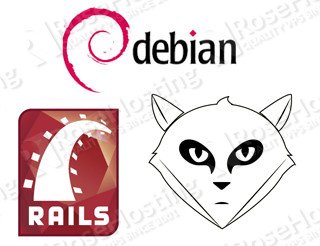To install Debian alongside an existing operating system (Windows or other), you must have some available hard drive space that is not being used by the other system in order to be able to create the partitions dedicated to Debian.
This guide will step you through the process to install Debian 7 to either a new hard drive or to replace the original OS of your MyBookLive NAS. I built this guide after researching multiple sources trying to get a detailed step by step, but all of the sources I found either built off other guides with confusing instructions or were very broken and hard to follow. So this is what I have come up with.

I’ve tested this many, many times as I was changing configurations and just trying out different things to see what the MyBookLive could handle and a lot of the time it ended with the system no longer responding on the network. Since I don’t have a JTAG device to access the device I have just found it easier to just reload the drive with a new system. There are some limitations to what you can load onto the drive since the processor is a PowerPC, but the stuff that could be loaded in the OS makes it a pretty useful network device.
WARRANTY WARNING: The following steps will void your warranty, if you still have one! There are steps to reset your drive back to factory if you so desire to, a quick search on Google will guide you through that. Prerequisites DISABLE ANY AUTO RESTART APPLICATIONS on your host system. I’ve had this happen a couple of times where the host system installed new updates and decided, hey there isn’t anything going on let’s restart your computer! Nothing is really lost, but it leaves you wondering where at in the processes did it restart! You need to be able to connect to the hard disk and therefore you must open the MyBookLive case. There’s a nice video how to do this on YouTube.
Guardian air conditioning serial numbers. • Debian Linux 8 – 64bit (Either a physical system or through a ) installed. NOTE: All of the code listed below is done from a virtual machine setup. You will need to make sure that you attach the hard drive to the virtual machine. • USB to SATA Unless you can connect your drive directly to your computer Note: Depending on how old your USB to SATA adapter is you might noticed when you go to partition the hard drive the drive size is only reported as about 750GB, this doesn’t stop anything but you will want to wait on making all of the partitions on the hard drive since you technically won’t be able to configure all of the space during the initial setup. • Active Internet Connection (You will be downloading files from the internet, so this is important) If you run into major problems it is also very helpful to attach a serial converter to debug the boot process. Again you can search online to find out more information about this.
Otherwise you can connect the drive to your computer to look at the logs and figure out where the problem is during boot up are. Partition the hard disk Partition your hard disk with GPT partition table e.g.
Using parted or gparted if you have the gui installed. I created a 10 Gb EXT3 disk for the system as the first partition, you are welcome to create whatever size you’d like but I recommend no less than 5 GB. Note: The actual drive letter of the hard drive might be different based on the amount of other hard drives you have connected to your system. Just substitute the drive letter in the commands below.
User@debian:~$ sudo parted /dev/sdb (parted) mklabel gpt (parted) mkpart Partition Name? (optional, I entered OS just for reference) File system type? (press enter) Start: 1 End: (this is up to you, if you want 10 GB enter 10.00GB) (parted) print (parted) quit user@debian:~$ sudo mkfs.ext3 /dev/sdb1 If you are using a USB to SATA adapter and it isn’t showing you the correct volume size then you need to wait on creating the other partitions later. Otherwise, create a second partition that is ext4 that uses all but 1 GB of space and then create the swap partition of 1 GB at the end of the drive. Install debootstrap If you didn’t follow the first guide on setting up your Virtual Machine, then you will need to complete the following command.
